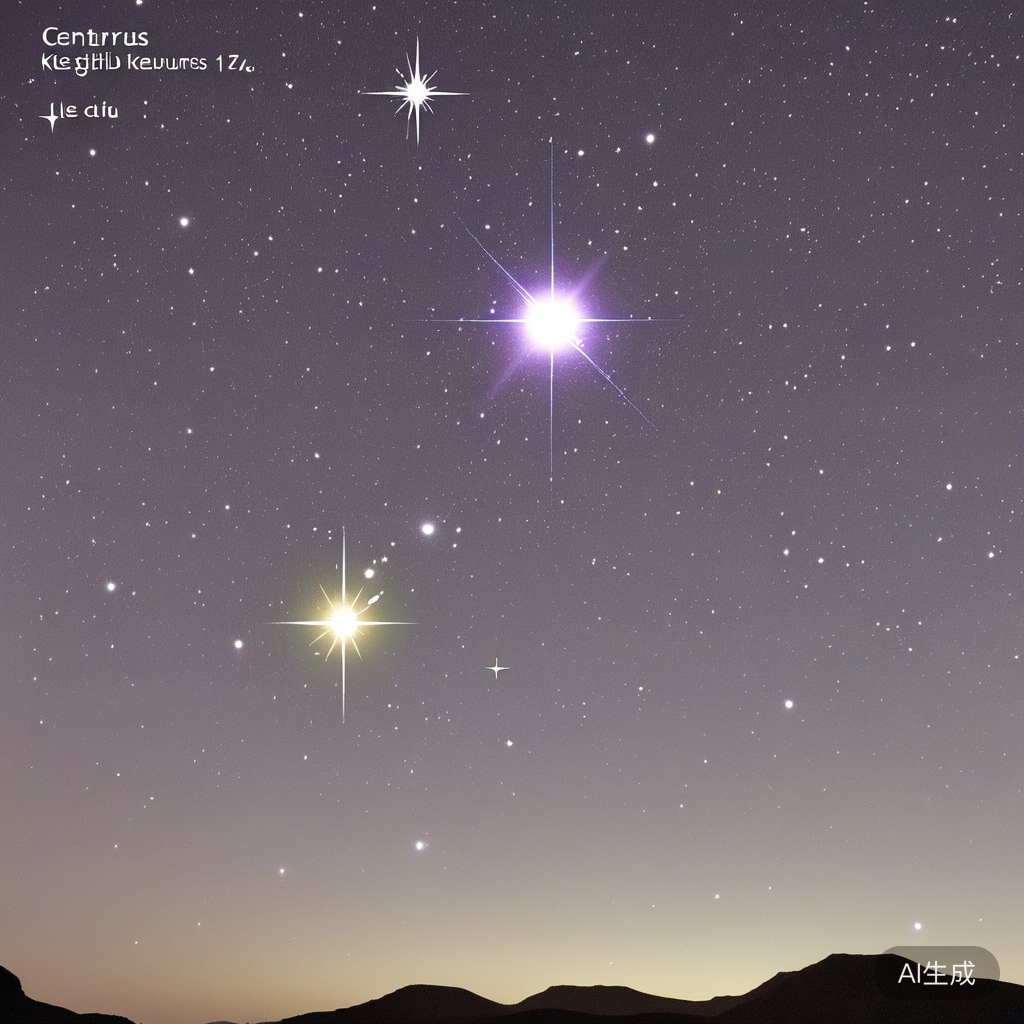Nestled in the cosmic expanse, the star system of Centaurus is a name that resonates with sci-fi aficionados as the home of the advanced civilization in "The Three-Body Problem" and the ultimate destination for humanity’s exodus in "The Wandering Earth." This celestial gem is the nearest star system to our solar neighborhood, the bright and beefy Centaurus Triple.

Centaurus, aconstellation that shines with the luster of a celestial beacon, boasts a couple ofA-type stars, Rigil Kentaurus and Alphard, respectively. It’s a treasure trove of astronomical wonders, harboring all sorts of fascinating celestial bodies within its expansive embrace. Nestled in the southern sky, its heart lies at a right ascension of 13 hours and a declination of -47 degrees, stretching over an area of about 1060 square degrees. You’ve got to be south of the equator, particularly in the spring, to get a glimpse of thisconstellation from certain parts of China.

Now, let me tell you about the main attractions in this star-studded neighborhood. The Centaurus constellation is primarily anchored by the stars Centaurus Alpha and Centaurus Beta, making it the ninth largest constellation in the night sky. Centaurus Alpha, also known as Rigil Kentaurus, is actually a triple star system that’s closest to us sun lovers. With an apparent magnitude of about -0.27 and an absolute magnitude of 4.4, it’s often regarded as the third brightest star in the entire sky. This system is a cozy little family of three stars, with Rigil Kentaurus A, Rigil Kentaurus B, and Proxima Centauri all living just 4.24 light-years away from us – the closest stars to our solar system.
Then there’s Centaurus Beta, or Alphard, another triple star system that’s the second brightest star in Centaurus and the eleventh brightest star overall. It’s about 390 light-years away, which is quite the distance when you’re talking space travel. These two stars have been BFFs for millennia, so much so that the ancients in China decided to call them the "Southern Gate Double Stars." They were so close that even Zheng He used them to navigate his epic voyages across the seas.
Now, let’s take a detour into mythology. The Centaurus constellation is steeped in Greek myth, featuring the centaurs – half-human, half-horse creatures. Most of them were a rowdy bunch, living in the mountains, prone to drinking, debauchery, and the occasional bar fight. They could run like the wind and fight like, well, horses with a bad attitude. But among them was Chiron, the wise and gentle teacher, mentor to many a hero including Asclepius, Theseus, Achilles, Jason, and Heracles. Chiron was the exception to the rule, and his story has a bittersweet ending. After being accidentally wounded by one of his students, he was immortalized in the stars by Zeus, forming the image of a centaur, which we see in the constellation today.
The stars of Centaurus draw a picture of a warrior centaur, spear in hand, locked in battle with a. It’s a testament to the duality of the centaurs – brute force and unexpected wisdom. Chiron’s legacy lives on in the stars, a reminder of a more noble side of these mythical creatures.
So, the next time you’re gazing up at the night sky and you spot that collection of stars that looks like a half-man, half-horse, take a moment to ponder the tales of the centaurs. From the scientific wonders of the Centaurus star system to the timeless stories woven into its celestial tapestry, it’s a journey through the cosmos that’s as much about looking up as it is about looking within.








